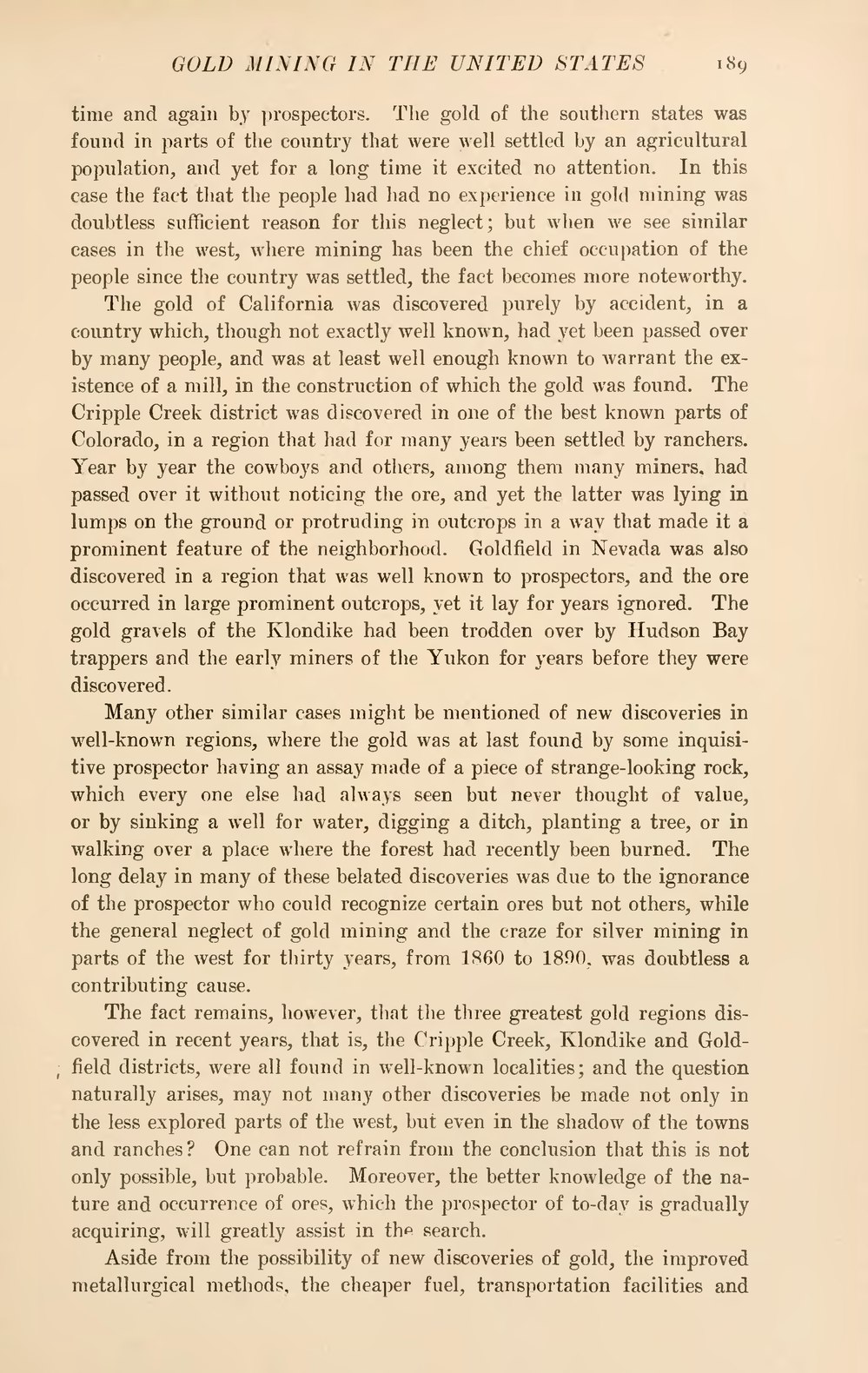time and again by prospectors. The gold of the southern states was found in parts of the country that were well settled by an agricultural population, and yet for a long time it excited no attention. In this case the fact that the people had had no experience in gold mining was doubtless sufficient reason for this neglect; but when we see similar cases in the west, where mining has been the chief occupation of the people since the country was settled, the fact becomes more noteworthy.
The gold of California was discovered purely by accident, in a country which, though not exactly well known, had yet been passed over by many people, and was at least well enough known to warrant the existence of a mill, in the construction of which the gold was found. The Cripple Creek district was discovered in one of the best known parts of Colorado, in a region that had for many years been settled by ranchers. Year by year the cowboys and others, among them many miners, had passed over it without noticing the ore, and yet the latter was lying in lumps on the ground or protruding in outcrops in a way that made it a prominent feature of the neighborhood. Goldfield in Nevada was also discovered in a region that was well known to prospectors, and the ore occurred in large prominent outcrops, yet it lay for years ignored. The gold gravels of the Klondike had been trodden over by Hudson Bay trappers and the early miners of the Yukon for years before they were discovered.
Many other similar cases might be mentioned of new discoveries in well-known regions, where the gold was at last found by some inquisitive prospector having an assay made of a piece of strange-looking rock, which every one else had always seen but never thought of value, or by sinking a well for water, digging a ditch, planting a tree, or in walking over a place where the forest had recently been burned. The long delay in many of these belated discoveries was due to the ignorance of the prospector who could recognize certain ores but not others, while the general neglect of gold mining and the craze for silver mining in parts of the west for thirty years, from 1860 to 1890, was doubtless a contributing cause.
The fact remains, however, that the three greatest gold regions discovered in recent years, that is, the Cripple Creek, Klondike and Goldfield districts, were all found in well-known localities; and the question naturally arises, may not many other discoveries be made not only in the less explored parts of the west, but even in the shadow of the towns and ranches? One can not refrain from the conclusion that this is not only possible, but probable. Moreover, the better knowledge of the nature and occurrence of ores, which the prospector of to-day is gradually acquiring, will greatly assist in the search.
Aside from the possibility of new discoveries of gold, the improved metallurgical methods, the cheaper fuel, transportation facilities a
